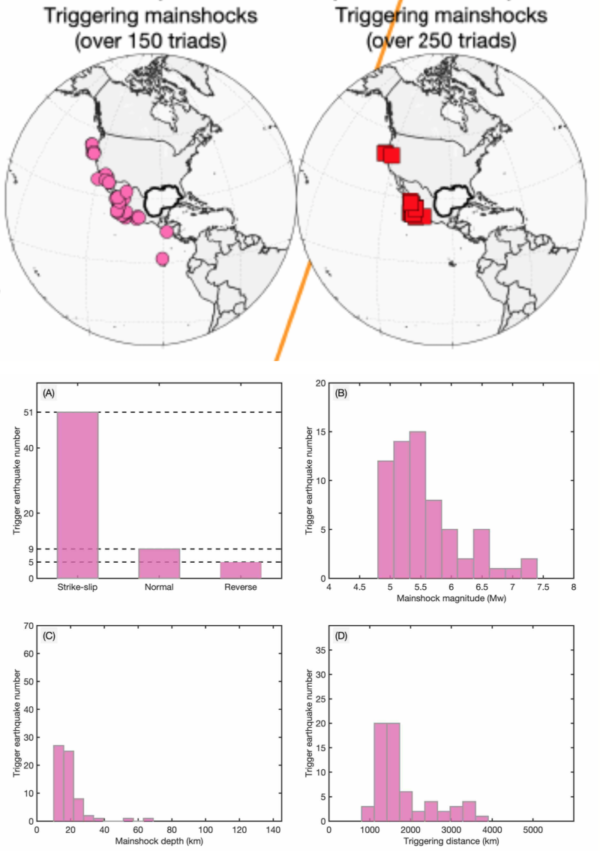This is such a cool study, and such an interesting result!
Earthquakes triggering landslides is not a surprise, but surface waves from a magnitude 5.5 earthquake in the Gulf of California triggering a landslide in the Gulf of Mexico (1500 km away) certainly is. This was but one of 65 earthquakes between 2008 and 2015 that were shown to trigger landslides (the landslides were identified and located from their seismic signature). The locations and characteristics of these earthquakes, from figures 4 and S6 of the paper, are shown below. I’m not sure if dominance of strike-slip is anything more than what you’d expect for tectonic situation in the source areas (not just the San Andreas and other inland strike-slip faults, but offshore fracture zones like the Mendecino)

Given that at the distances involved, the dynamic (temporary) stress changes from passing seismic waves will be very small, the local geology is a probably a big factor in amplifying their effects. In the Gulf of Mexico you have:
- big piles of loose sediment, which will slow down & amplify passing seismic waves;
- weak salt layers deeper down, which could act as easy failure surfaces for the overlying material;
- and salt diapirs creating locally steep (and unstable) topography.
We have a region which is primed for submarine landslides. If only a small push is needed, perhaps distant seismic waves are enough to start things moving.
This study also shows the value of deploying (and maintaining) regional seismic networks: look at the cool stuff you find in all of that data!



Nice plan for content warnings on Mastodon and the Fediverse. Now you need a Mastodon/Fediverse button on this blog.